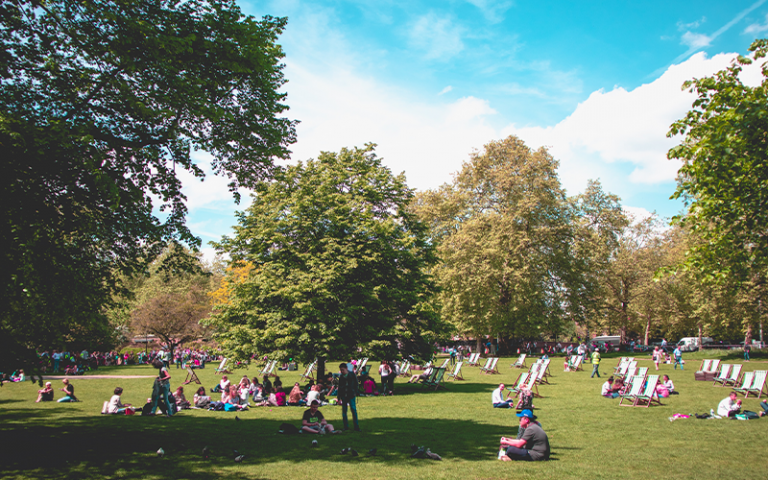Using the THRIVES framework in postgraduate teaching to conceptualise healthy places
21 June 2022
Dr Gemma Moore introduces student contributions through a reflection on using the THRIVES conceptual framework for healthy urbanism in the Health and Wellbeing in Cities module, on the Health, Wellbeing and Sustainable Buildings MSc.
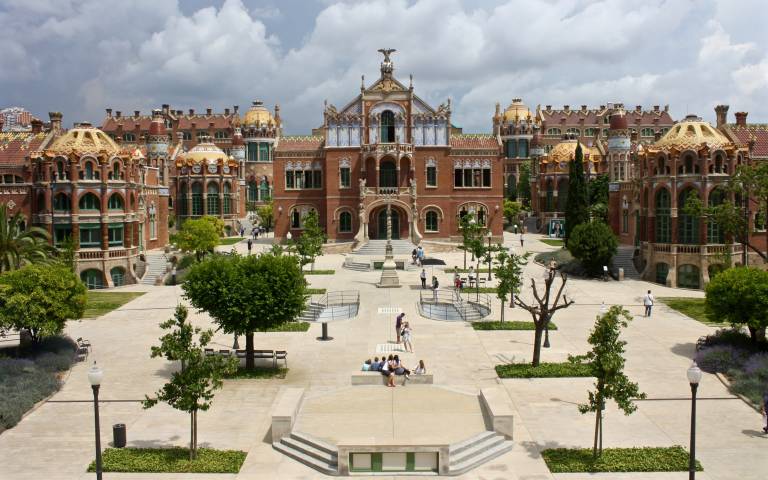
It is essential that students within the field of the built environment and urban studies have educational approaches and opportunities that support the questioning and critical reflection of key concepts such as health, wellbeing, sustainability and equity and the interrelationships between them.
Within the module ‘Health and Wellbeing in Cities’, the THRIVES Framework is used as an educational tool to encourage such critical inquiry. The participatory methods that we used to develop THRIVES helped us identify its value as a new lens to reframe traditional understandings of health in cities. Instead of focusing on individual factors, this framework focuses on the multi-scalar health impacts of urban development and the interconnected concepts of equity, inclusion and sustainability – factors that are heavily affected by built environment professionals. Students were asked to think of a development or place that they would consider ‘healthy’ – and then use THRIVES as a lens to articulate why (and how) their case study supports health and wellbeing.
The exercise placed students’ own experience at the centre of their learning. Through drafting and sharing real-life case studies - from a range of locations - under the THRIVES framework, students’ critically reflect on their own experiences, whilst learning from others. THRIVES provided a structure to share and compare a range of global case studies whilst integrating a diversity of ideas about how urban development affects health.
THRIVES illustrates what is possible, and needed, to support healthy urbanism, yet it is flexible to different contexts and priorities. Applying THRIVES as an educational tool provides an approach to build knowledge and develop the capabilities of future built environment and public health practitioners to solve the complex challenges of creating healthy, resilient cities.
The examples below illustrate the diverse perspectives and knowledge that postgraduate students bring to the topic of healthy urbanism. From community-led housing to a children’s rehabilitation centre, these short case studies transform ambiguous concepts, such as equity, inclusion and sustainability, into tangible examples of healthy design.
UCL Institute for Environmental Design and Engineering academic, Dr Helen Pineo, has published a new book that delves into the ‘why’ and ‘how to’ of Healthy Urbanism, using the THRIVES framework as a structure. The launch event will be at UCL (and online) on 7 July 2022. More information is available here.
Jump to: Marmalade Lane | Low Impact Living Affordable Community | Sant Pau Recinte Modernista Complex | Teletón Children’s Rehabilitation Center
Marmalade Lane [Cambridge, UK]
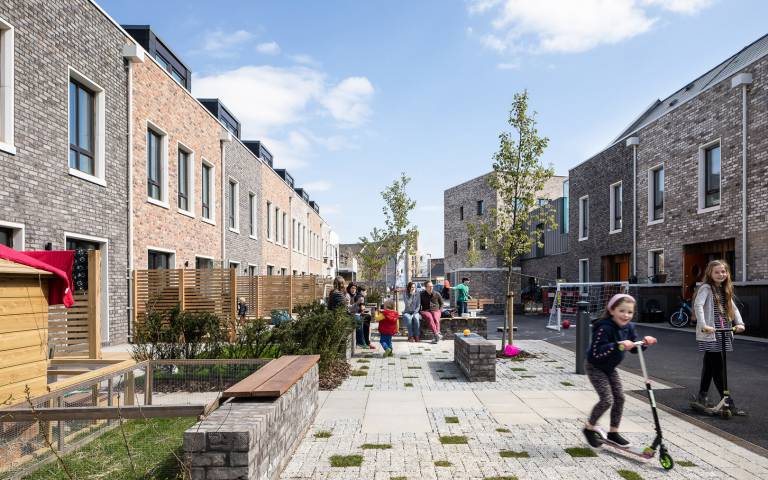
Marmalade Lane is a residential, co-housing development located in Cambridge, UK which consists of 42 homes, including terraced houses and apartments. It is the largest co-housing project in the UK.
Marmalade Lane supports health through its socially inclusive design and prioritisation of social cohesion. Co-housing involves a participatory design process where future residents contribute to the design of the buildings and in doing so create a community. There are shared facilities and shared management of the community, based on consensus decision-making.
The Common House is at the heart of the community connecting Marmalade Lane with the shared garden, providing a space to eat and meet. Eating together regularly is part of the community’s shared commitment to co-housing. A shared street on the site (“Marmalade Lane”) is a communal space between houses that can be used in many ways, that isn’t dominated by the car (access only) meaning that children can freely and safely play outside the homes.
Contributed by Gwendolyn Casazza, Innovation, Public Policy and Public Value MPA alumna. Follow Gwendolyn on Twitter and LinkedIn. Image credit: David Butler.
Low Impact Living Affordable Community (LILAC) Co-housing [Leeds, UK]
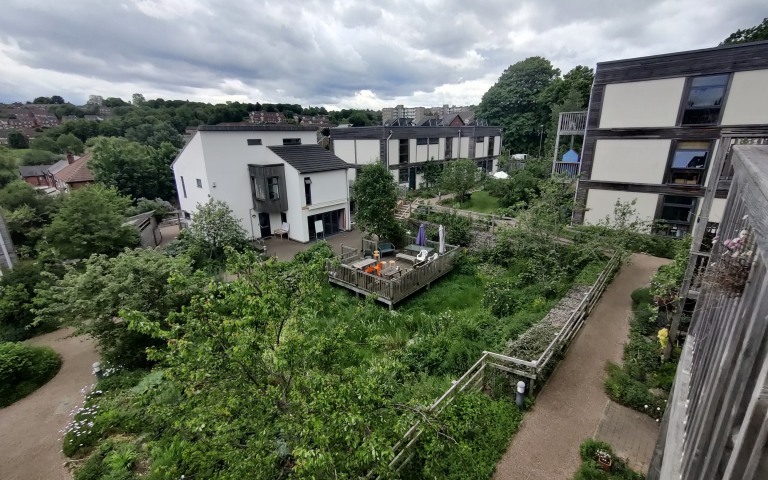
The project consists of 20 eco-homes created by members of the community that have come together to build. This is an example of community-led housing where the community take on the financial risk of the build (members act as the developers). This approach aims to build community wealth through strong local economies, tackle climate change through behavioural changes and to design spaces intentionally to unite communities and create a sense of belonging.
The following paragraphs identify how the project supports health using the THRIVES framework.
Sustainability: The houses were built using a modern low-carbon method of construction using panel timber walls insulated with strawbale (AECB Silver Standard - Passivhaus standard). This significantly reduced the CO2 emitted during construction. Each property has a Mechanical Ventilation Heat Recovery System (MVHR), which enables the indoor air quality to remain high without having to open the windows. Each home has a 1.25kw solar PV array, with an extra 4kw on the common house. The houses also have solar thermal for space and hot water heating.
Equity: The community operates a Mutual Home Ownership Scheme. Each member has a lease which gives them the right to democratically control the housing community in which they live. Members pay an equity share to the co-operative and retain equity in the scheme. Every member pays around 35% of their monthly net income for their lease, which covers the mortgage, maintenance, insurance and other fees. The more you earn the more you pay towards the co-housing, which makes the cost cheaper for lower-income members.
Inclusion: Environmental considerations are integrated in daily activities such as car sharing, pooling equipment and tools, sharing meals twice a week and looking to the local area to provide as many needs as possible. Growing food on the allotments means that they can eat locally. The development has a common house at the heart of the community which includes communal cooking and eating facilities, laundry facilities, meeting space, play area, office space and guest rooms. It hosts a delivery hub for several cooperatives and smaller organic suppliers. Skills share workshops are organized around food and learning new ways to source and prepare food.
Contributed by Sem Lee, Health, Wellbeing and Sustainable Buildings MSc Student. Follow Sem on LinkedIn. Image credit: Sem Lee.
Sant Pau Recinte Modernista Complex [Barcelona, Spain]

Sant Pau Recinte Modernista Complex is a neighbourhood development located in Barcelona, Spain. The complex, situated at a Cultural Heritage site, is an ecosystem of health, innovation, sustainability, and educational institutions associated with the medical field. Serving as a community space and still bringing impacts on a global scale, the development is a major LEED-certified renovation project designed to welcome all types of users and to assist their needs through the optimal usage of natural resources. Viewed through the THRIVES framework, sustainable, equitable, and inclusive measures were implemented in an integrated approach. Pavements and greenery, for instance, were provided and vehicle access was limited, improving user walkability and safety, and encouraging alternative forms of transportation (such as cycling – improving air quality).
The green spaces support community connectivity, working as a support system for health and wellbeing. The buildings situated in the pavilion are also committed to reducing water and energy consumption, as well as minimising waste production. This project is an important example of how to transform a monumental complex and a World Heritage Site into a modern facility considering social and environmental necessities and should be used as a model of a healthy place.
Contributed by Sofia Felipe Contin De Oliveira, Health, Wellbeing and Sustainable Buildings MSc Student. Follow Sofia on LinkedIn. Image credit: Trevor Huxham on Flickr.
Teletón Children’s Rehabilitation Center [Lambaré, Paraguay]
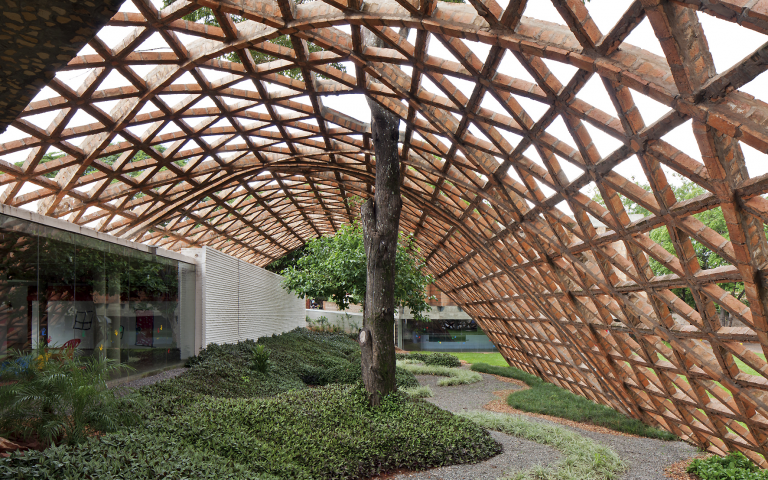
Teletón is a private, non-profit organisation that provides services to physically disabled children from 0 to 18 years of age. This building, designed by Gabinete de Arquitectura led by Paraguayan architect Solano Benitez, seeks to generate the least possible impact on the environment, create a stimulating and healing space for the children whilst optimising the available budget, which was raised entirely through social donation. In the following, a description is given of how the project supports health using the THRIVES framework.
Sustainability is manifested through construction materials, with rubble being a key one. Vaults, slabs and walls were created from this recycled material. The building protects itself of as much direct sunlight as possible to prevent internal heat gains and keep the interior at a cooler temperature. However, on the ground floor there is plenty of glazing providing connection with nature and the brick panels around the facade create gaps through which sunlight penetrates, providing indirect daylight.
The building demonstrates equity concepts for children who do not have the same physical, psychological and economic opportunities to access medical care. There is a sensory room created to stimulate children's senses as well as an indoor swimming pool for muscle strengthening through low-impact water exercises. Together, the organisation and the building design, reduce the economic barrier to access a quality centre for free healthcare.
This building is inclusive for children with disabilities and their families who are otherwise under-served by the government and the city itself. The project was accomplished through a participatory design process to ensure that the needs of the children, their families and the medical team working there were incorporated into the design.
Contributed by Veronica Pecci, Health, Wellbeing and Sustainable Buildings MSc alumna. Follow Veronica on Instagram or LinkedIn. Image credit: Leonardo Finotti.
 Close
Close


